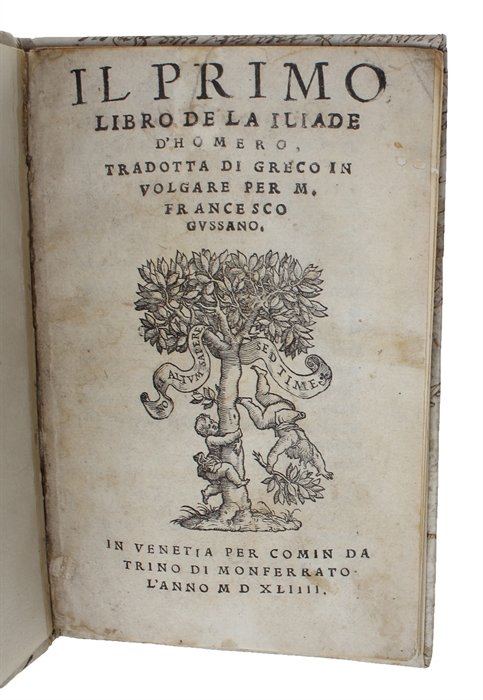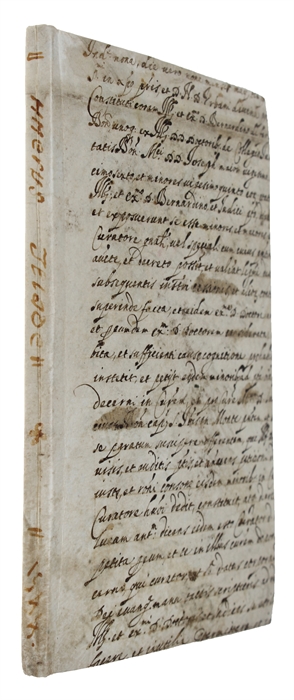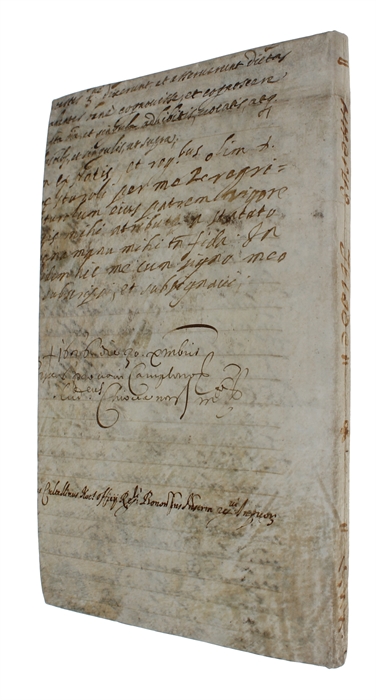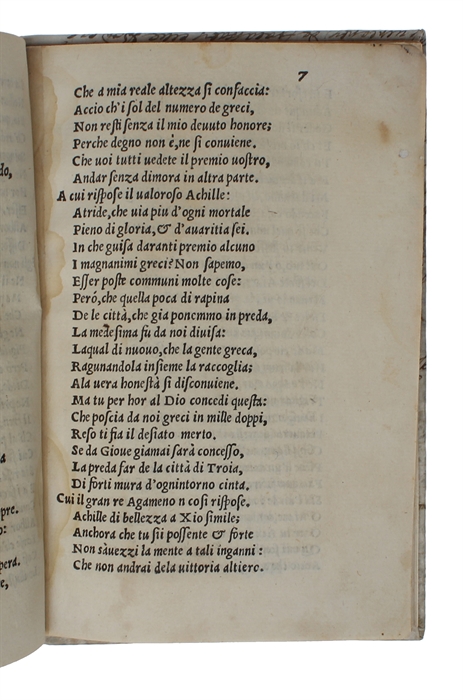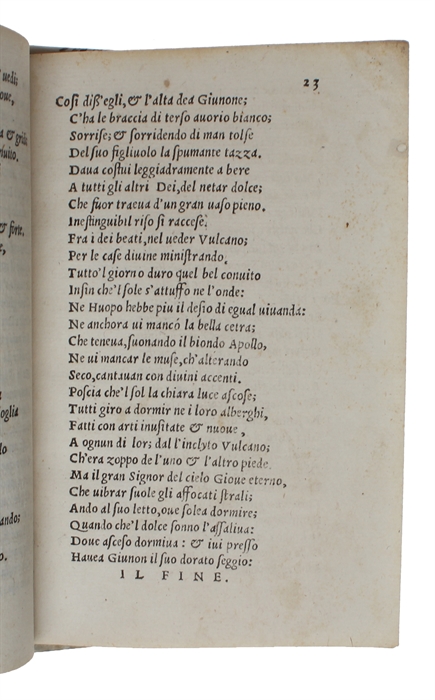THE EARLIEST KNOWN VERSION OF ANY PART OF THE HOMERIC CORPUS TO APPEAR IN ITALIAN
HOMER.
Il primo libro de la Iliade d'Homero, tradotta di Greco in volgare per M. Francesco Gussano.
Venice, Trino di Monferrato, 1544.
Small 8vo (15x 10 cm.). Bound in a late 17th century manuscript leaf of vellum, with neat decorative handwriting. Title-page with a closed tear, affecting the "R" in the title, but with no loss. Small, restored marginal wormhole to outer blank margin of all leaves, far from affecting text. Title-page a little dusty, otherwise very nice throughout. A well preserved and charming copy. Old owner's signature ("Giovanni de Brignoli") to verso of title-page. Large woodcut device to title-page. 23 ff. + 1 blank leaf at end.
Exceedingly scarce first edition of the very first translation of any part of the Odyssey or the Iliad to appear in Italian translation. This slim volume constitutes a milestone in the history of the Homer-reception and is the earliest known version of any part of the Homeric corpus (naturally not counting the Batracomiomachia) to appear in Italian. The Italians had to wait another 20 years for another part of the Homeric corpus to see the light of day in their own language. "There is no doubt that Italy played a central role in the diffusion of the Homeric text among Italian humanists and the rest of Europe. It seems, however, that at the end of the sixteenth century, French scholars and publishers were the ones to take over Italy's leadership and advance Homeric studies in Europe. The first translation of Homer into Italian is the version of book 1 of the Iliad by Francesco Gussano, published in Venice in 1544. The first edition of Lodovico Dolce's translation in octaves of both the Iliad and the Aeneid was published posthumously in 1570. " (Translating Homer", Curated by Pablo Alvarez, Special Collections Library). "In Italy, Homer's entry into the vernacular was far slower: partial translations of the "Iliad" dribbled out in 1544 (Gussano), 1564 ("Iliad" 1-5, Paolo la Badessa), 1570 ("Iliad" I, Luigi Groto Cieco)... But a complete Italian Iliad did not appear until ... 1620." (Jessica Wolfe in: Cambridge Guide to Homer, pp. 496-97). The work is of the utmost scarcity, and we have not been able to trace a single copy at auction anywhere in the world within the last 50 years at least. Moss: I, 534 ("A very rare edition").
According to OCLC, only six libraries worldwide own a copy, four being in the US, and two in the UK.
Order-nr.: 59788

